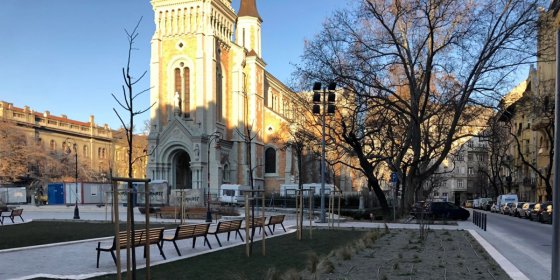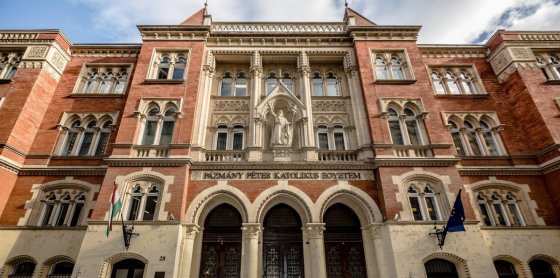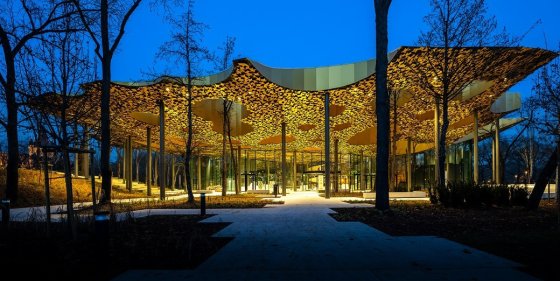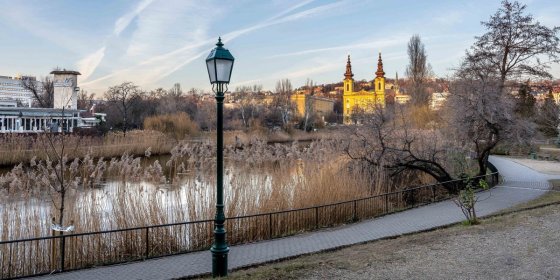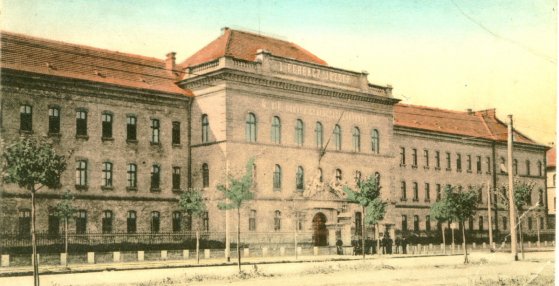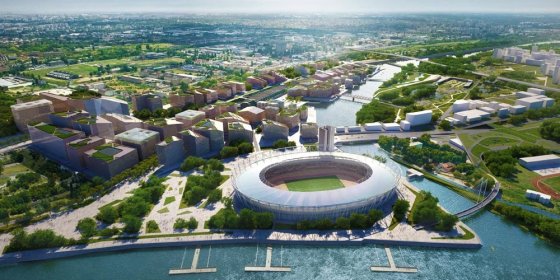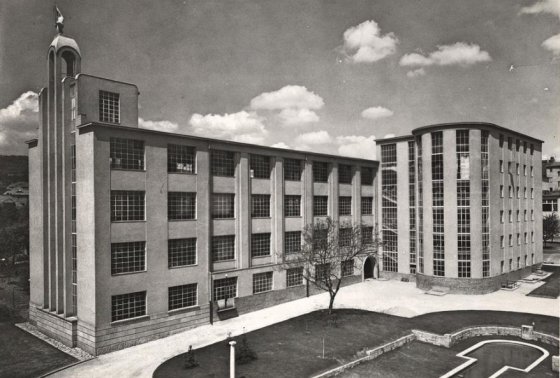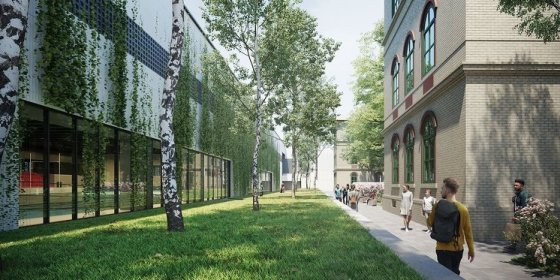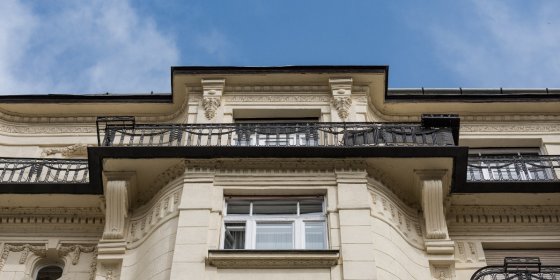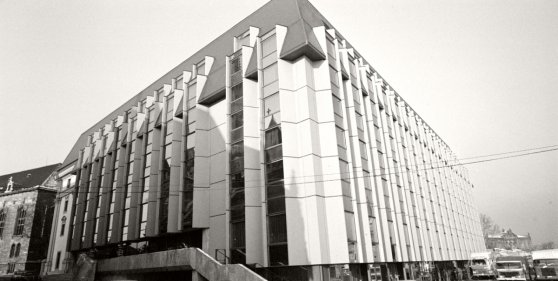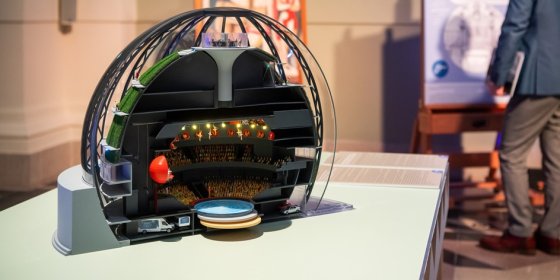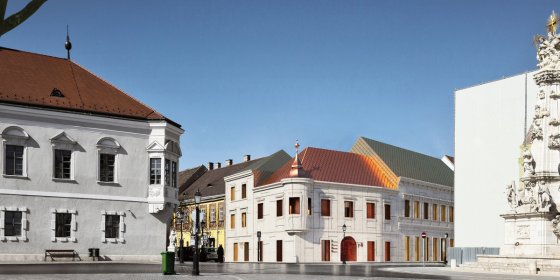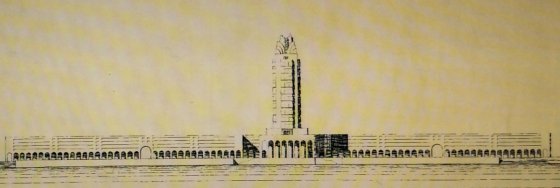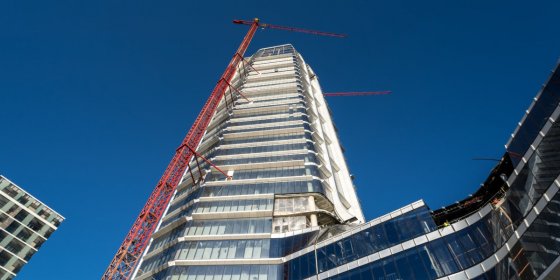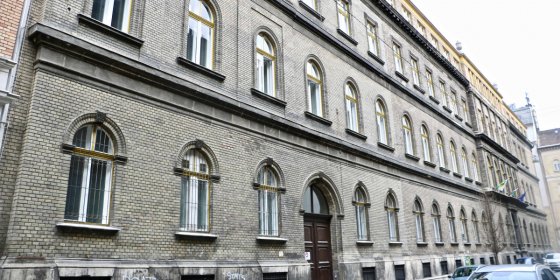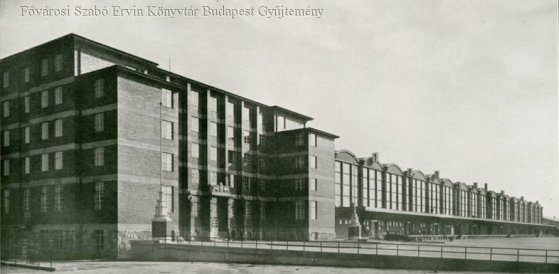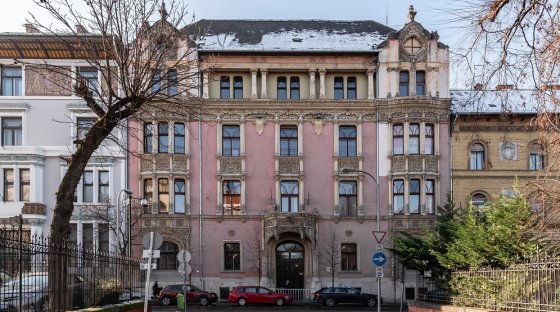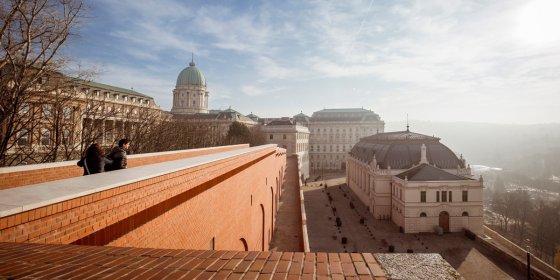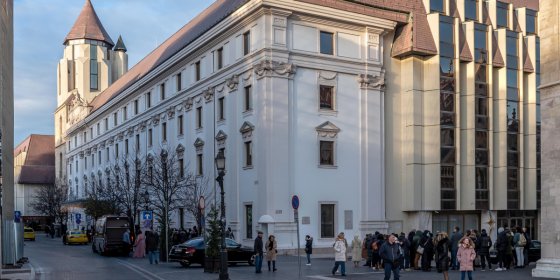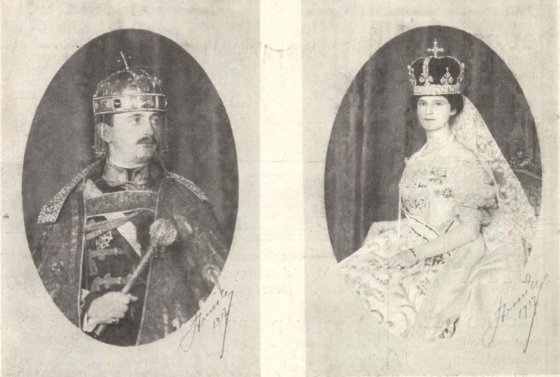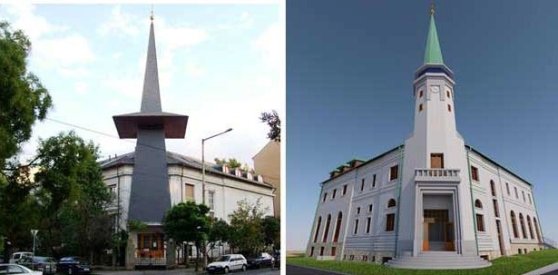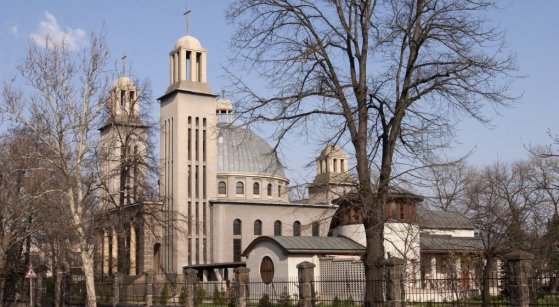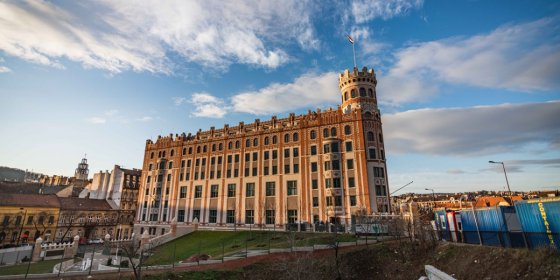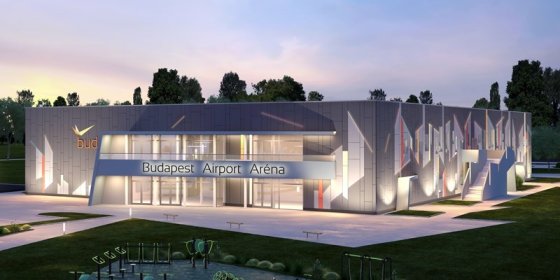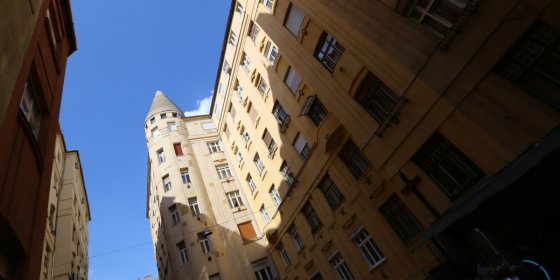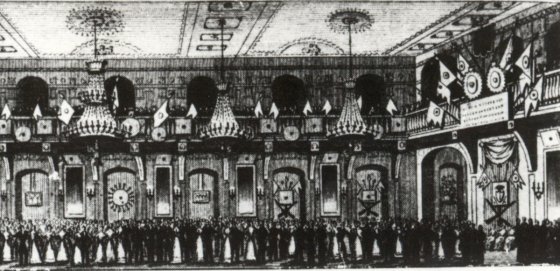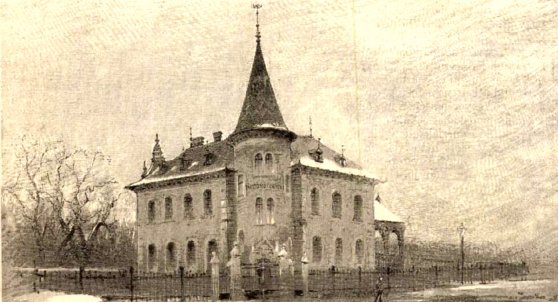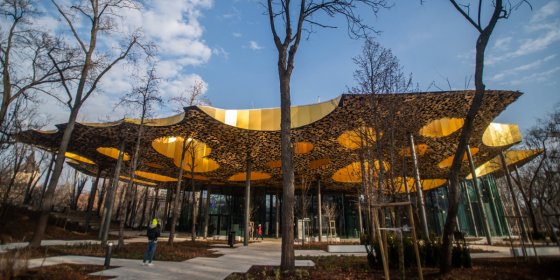 The „intertwined history” of the bridges and the city of Budapest
Which ideas and events have shaped the fate of bridges of Budapest and the cityscape? Alongside many other interesting facts, this question is also answered this newly published book by the Budapest City Archives, which introduces the history of bridges in Budapest.
The „intertwined history” of the bridges and the city of Budapest
Which ideas and events have shaped the fate of bridges of Budapest and the cityscape? Alongside many other interesting facts, this question is also answered this newly published book by the Budapest City Archives, which introduces the history of bridges in Budapest.
Architecture
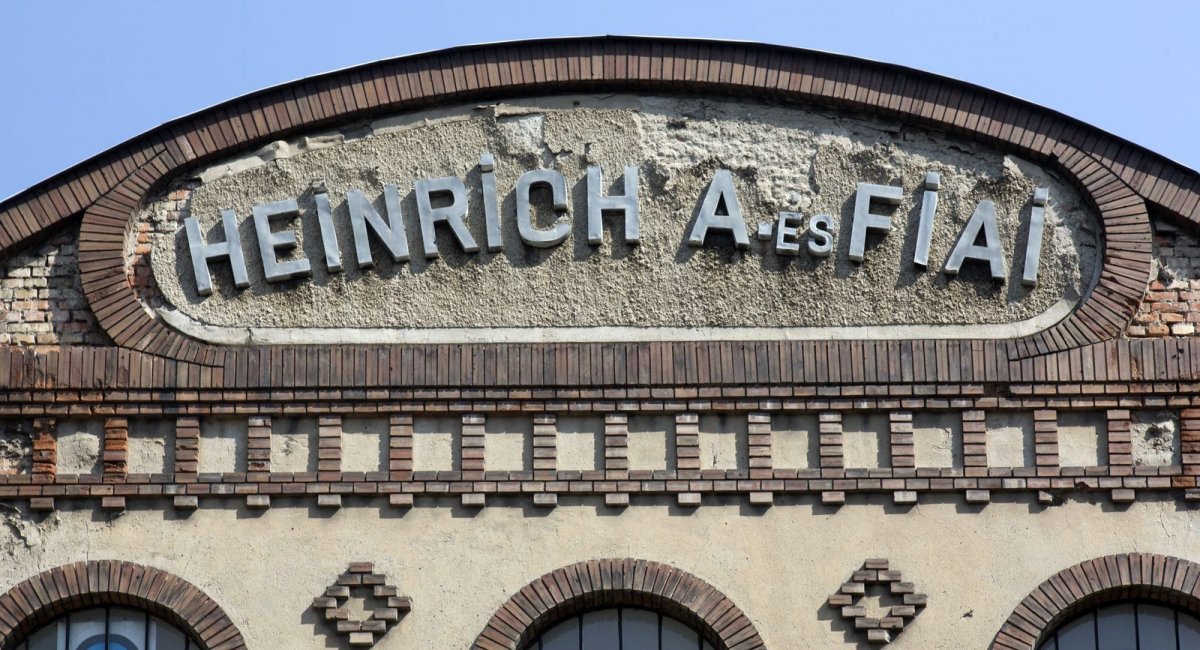 Two Faces of a Building - The Heinrich Courtyard in Józsefváros
Two Faces of a Building - The Heinrich Courtyard in Józsefváros
January 26, 2022 at 10:30 AM
On the opposite side of Üllői Road, opposite the Museum of Applied Arts, stands a neo-baroque tenement house, built by the iron merchant Ferenc Heinrich. Not far from it, and in the neighbouring Mária Street, lies the long facade of an Art Nouveau warehouse. One would not even think that the two had anything to do with each other, however, both were built by the Heinrich iron merchant family. The latter was completed by 1912, meaning it could begin to be filled with goods a hundred and ten years ago.
The renovated Bakát Square was handed over
January 24, 2022 at 7:00 PM
The renovation of the main square of Ferencváros, Bakáts square, has been completed. The development of the space was initiated in 2016 by the 9th district local council, and by 2018 the plans were born and the implementation was prepared by the experts on behalf of the local council Plants, benches, chess and mill tables and drinking wells were installed on the square formed in the 19th century.
They are looking for a contractor for the new campus of the Pázmány Péter Catholic University
January 24, 2022 at 11:00 AM
The new, unified campus of the Pázmány Péter Catholic University will be located in the Palace District of Józsefváros. As part of the works until 2027, a new campus building will be erected at 26 Szentkirályi Street, and the listed building at 15 Bródy Sándor Street will be renovated, 28-30 Szentkirályi Street Palace will be remodeled and connected to the adjoining university building. An open tender was issued for the construction.
The House of Hungarian Music has opened in City Park
January 22, 2022 at 7:00 PM
On the occasion of the National Day of Hungarian Culture, the House of Hungarian Music, completed within the framework of the Liget Budapest Project, was ceremoniously handed over in City Park. The new institution, which opened in a special building, awaits the public from 23 January 2022 with interesting music programs, an exciting and interactive permanent exhibition of music history, and a three-day program series next weekend.
The Bottomless Lake: a romantic landscape in Újbuda
January 21, 2022 at 9:00 AM
One of the emblematic sites of Szentimreváros in the 11th District is the Bottomless Lake, which was artificially created in the late 19th century. The workers of the brick factory operating on the site of today's Kosztolányi Dezső Square accidentally cut through a deep watercourse, the stratum water burst to the surface and slowly filled the clay bed. The Bottomless Lake and its shores were neglected until the middle of the last century, where rubble and ruins were carried here during the two world wars. However, between 1958 and 1960, it was put in order and a park was established around it, and since then it has been a popular place for the citizens.
Where there used to be a barracks, there is now a sports hall - The history of the Franz Joseph infantry barracks
January 20, 2022 at 9:00 AM
Opposite Népliget stood a military object for more than a hundred years, the sight of which largely determined the intersection of Üllői Road and Könyves Kálmán Boulevard. Today it is replaced by a huge handball hall, which is currently hosting the first international sporting event. The history of the new building is still very short, but it offers a good opportunity to get to know the old one.
A gym will be built next to the athletic stadium on Csepel Island
January 19, 2022 at 2:00 PM
A hall of approximately 12,000 square meters will be built on the northern tip of Csepel Island as part of the National Athletics Center. The gym will provide daily training opportunities for both amateur and professional athletes, but will also be suitable for competitions. There will also be a public park around the hall.
Once a world-famous factory in Budapest, now a hardly known company - The Hungarian Optical Works
January 19, 2022 at 10:00 AM
Just 100 years ago, in 1922, the Süss Nándor Institute of Precision Mechanics and Optics PLC was named after its founder. It was the plant which later became one of the largest and world-famous factory in Budapest. The factory, which has been operating under the name Hungarian Optical Works since 1939, once dominated the area around Csörsz Street, but today, only the name MOM, and the community centre reminds us to the former factory.
Athletics hall, sports hotel to be built on the campus of the University of Physical Education, the historical garden is being reconstructed
January 18, 2022 at 8:00 PM
An athletics hall with a 400-seat grandstand, a sports roof on top, and new swimming pools and a sports hotel will be built in the Alkotás Street block of the University of Physical Education during the second phase of Buda's largest university development. In addition, the historic garden is being reconstructed around the main building designed by the institution, designed by Alajos Hauszmann.
Endre Ady's former home in the city center has been renovated
January 15, 2022 at 9:30 AM
On 18 January, the renovated Ady Memorial Museum will open at 4-6 Veres Pálné Street, 5th District. The last home of Endre Ady, which today is a branch of the Petőfi Literary Museum as a memorial museum, awaits those interested with more friendly public spaces, a renewed exhibition, new museum pedagogical sessions and a series of programs.
Nearly one hundred and eighty buildings would come under local protection in the capital, according to a draft
January 13, 2022 at 12:30 PM
According to a new draft, the Budapest local council would place mainly the residential houses built between 1945 and 1980, including residential houses in Budavár, two housing estates, two former party houses and a workers' hostel. The proposal for the Budapest General Assembly lists the buildings to be preserved in nine pages, the nearly 180-item list includes the Hilton Hotel in Budavár, the main building of the Southern Railway Station, and a number of modern buildings in several districts, including downtown after the war.
Such will be the National Circus Arts Center planned next to the Western Railway Station
January 11, 2022 at 7:30 PM
A model of the building of the National Circus Arts Center to be built next to the Western Railway Station was also presented at a professional and scientific conference held on the eve of today's 14th Budapest International Circus Festival. Participants were introduced to the history of European circus buildings, and an exhibition was opened.
A building fitting the historical environment will be on Szentháromság Square in Budavár, says the designer
January 10, 2022 at 4:30 PM
A house, respecting the historical past, which closely matches the image of the Castle District and the UNESCO World Heritage Site, will be the new conference centre of the Pallas Athene Domus Meriti Foundation in Szentháromság Square, said Ádám Reisz, head of Rapa Architects, the designers of the building. He also explained that the starting point for the reconstruction of the facade was the pre-war state, as there is a wealth of visual information available about this age on which they could based it.
The 130-metre-high Tower of Hungarian History would have been built on the banks of the Danube in Pest
January 8, 2022 at 10:30 AM
The new headquarters of MOL will be completed later this year, and will be the first skyscraper in the capital. Together with the technical equipment placed on the roof, a 143-metre high-rise building will be constructed in Buda, in the Lágymányos District, but a building of a similar size was planned on the banks of the Danube in Pest between the world wars. In the plan of Jenő Lechner's Tower of Hungarian History, the everyday tasks of a tourist service centre and the sublime functions of a national pantheon appeared at the same time.
The skyscraper on the Kopaszi Dam will be completed soon
January 7, 2022 at 9:30 AM
The120-meter Mol headquarters is expected to be built this year on the Kopaszi Dam in the 11th district. The tallest building in Budapest will have not only offices, but also public spaces, so for example, anyone will be able to admire the view of Budapest from the lookout terrace planned on the roof of the tower house.
The ELTE Trefort Street Gymnasium will be renewed
January 6, 2022 at 2:00 PM
The building of the Ágoston Trefort Gymnasium of the Eötvös Loránd University is being renovated. The house on the corner of Szentkirályi street – Trefort street, designed by János Bobula and built in 1887 and under monument protection, will be expanded in addition to the reconstruction.
The past of Nagyvásártelep - The food trade centre of the capital was built ninety years ago
January 6, 2022 at 9:00 AM
When the Central Market Hall in Fővám Square was handed over in 1897, the leaders of the city believed that the process of food industry development and freight transport, which had been going on for decades at the time, had come to an end. Steam mills, slaughterhouses and meat plants were lined up along Soroksári Road, and the needs of retailers and wholesalers were fully met with the establishment of the Danube Coast Freight Station and the construction of public warehouses between the Southern Railway Link Bridge and Fővám Square. However, it soon became clear that this was far from the case, and there was an urgent need to ensure the daily flow of goods through a wholesale market.
One of the imposing Art Nouveau palaces on Bajza Street is being renovated
January 5, 2022 at 2:00 PM
The Art Nouveau apartment building of Samuel Baruch is being renovated in the 6th district at 44 Bajza street. As a first step in the reconstruction, the ground floor and first floor rooms will be restored. The three-storey palace was built in 1899 according to the plans of Zoltán Bálint and Lajos Jámbor.
The Hauszmann ramp connecting the Csikós yard and the Hunyadi yard in the Buda Castle has been completed
January 3, 2022 at 2:00 PM
The Hauszmann ramp connecting the rebuilt Csikós courtyard and the Hunyadi courtyard has been completed, and its external appearance is an integral part of the rest of the castle wall, including the recently renovated Ybl retaining wall. From now on, the ramp can be reached again on foot to the level of the Buda Castle.
The Hilton Hotel in Budavár was handed over on New Year's Eve 45 years ago
December 31, 2021 at 7:30 PM
The Hilton Hotel, handed over 45 years ago, was built on the site of the city’s most beautiful Baroque monument, a Jesuit dormitory damaged in World War II. Only the western wall of the old building facing András Hess Square remains. Some say that the modern building has been incorporated into the castle environment, others believe that it disturbs the harmonious view of the Matthias Church and the Fisherman's Bastion with its huge block.
The last coronation - Charles IV became a Hungarian king 105 years ago
December 30, 2021 at 9:00 AM
During the bloodthirsty years of World War I, the difficult fate of the Austro-Hungarian Empire was compounded by another blow at the end of 1916: Emperor and King Franz Joseph I died. After sixty-eight years of rule, he passed away on 21 November 1916. He was succeeded by his grandnephew, Archduke Charles of Habsburg-Lorraine, who had been crowned king on 30 December 1916, 105 years ago.
The Reformed church on Böszörményi ústreet was renovated and a new tower was built
December 26, 2021 at 2:00 PM
A new tower was erected, the church square was enlarged, classrooms were built, and a modern scout home was created during the reconstruction of the Reformed church on Böszörményi street. The conversion was already very timely in the church, which originally served as a restaurant and was later only partially remodeled.
The Lutheran Great Church in Rákospalota is eighty years old
December 26, 2021 at 11:00 AM
The need to build a large Lutheran church arose in Rákospalota in 1936. The building, designed by György László and Jenő Szalkay, with modern elements, is eighty years old this year.
The Money Museum in the former Postal Palace will be completed by March
December 23, 2021 at 3:30 PM
In the middle of March, the Hungarian Money Museum and Visitor Center will open its doors in the former Postal Palace on Széll Kálmán Square. During the interior renovation of the building, designed by Gyula Sándy and erected between 1924 and 1926, the specially developed railings of the staircases and the oak gates decorated with wrought-iron handles were restored, and the paternoster was preserved in working order.
We have the first visual plans - This will be the Budapest Airport Arena
December 22, 2021 at 2:00 PM
The first visual plans for the Budapest Airport Arena in Pestszetlőrinc are public. During the investment, with the expansion of the old sports hall, a hall with a capacity of 1,000 people will be built, which will also be available to students from the surrounding schools.
The building of the ELTE Trefort Garden Campus is being renovated
December 21, 2021 at 8:00 PM
During the large-scale restoration and remodeling, a hall, lecture halls, new levels and green roofs will be built in the building of the Trefort Garden Campus of ELTE in the 8th district Pushkin street. Loránd Eötvös worked and conducted his experiments in a house designed by Antal Szkalnitzky, one of the most significant architects of the settlement age, where the Institute of Physiology and the Institute of Medical Chemistry operated for sixty years.
The Chapel of St. Augustine in Újpipótváros was renovated
December 20, 2021 at 6:00 PM
The Chapel of St. Augustine of the Order of Premontre in Újlipótváros was renovated, originally built in 1950 from the former coal cellar of the building at 14 Pozsonyi road. The chapel was blessed at Mass on Sunday by Zoltán Márton Fazakas, abbot of Premontre in Csorna, who spoke of the fact that the chapel was like a catacomb for many decades, where people could only conceal their faith.
Where the 12-year-old Liszt also played - The Seven Electors' Inn was the centre of social life in Pest
December 19, 2021 at 11:00 AM
The most prestigious balls of Pest in the first decades of the 1800s were held in Downtown, at 9 Váci Street, on the floor of The Seven Electors' Inn (Hét választófejedelem fogadó). Joseph II also stayed at the inn, 12-year-old Ferenc Liszt gave his first concert in Pest here. The audience could also admire the plans of the first permanent bridge between Pest-Buda in the Great Hall of The Seven Electors' Inn. The house was demolished in 1840, and the three-storey classicist residential house of József Hild was built in its place, which houses the Pesti Theatre nowadays.
The Home of Hungarian Teachers is still standing today - Teachers living in poor conditions could move into the tower building
December 17, 2021 at 10:00 AM
At the beginning of Orczy Road, close to Nagyvárad Square, stands a house with a tower, reminiscent of a medieval castle, quietly hiding behind the surrounding trees. Few know that this building once served as the home of the poor teaching women in the capital.
The imposing building of the Hungarian House of Music in Városliget has been completed
December 16, 2021 at 6:00 PM
The House of Hungarian Music was built in Városliget. Opening on 22 January with an interactive music history exhibition, the building will have a triple function: hosting concerts, dance halls and community music, providing space for education and music pedagogy, as well as interactive permanent and temporary exhibitions, a sound field and a creative sound space.
More articles
 The „intertwined history” of the bridges and the city of Budapest
Which ideas and events have shaped the fate of bridges of Budapest and the cityscape? Alongside many other interesting facts, this question is also answered this newly published book by the Budapest City Archives, which introduces the history of bridges in Budapest.
The „intertwined history” of the bridges and the city of Budapest
Which ideas and events have shaped the fate of bridges of Budapest and the cityscape? Alongside many other interesting facts, this question is also answered this newly published book by the Budapest City Archives, which introduces the history of bridges in Budapest.
 The Bridge Report, which brought a turning point in the history of Budapest
A travel report that changed the history of Pest and Buda, as well as Hungary. The little book contributed to the change of half a thousand years of legal customs and the implementation of an investment of unprecedented size and technical quality. This book was The Bridge Report [Hídjelentés in Hungarian].
The Bridge Report, which brought a turning point in the history of Budapest
A travel report that changed the history of Pest and Buda, as well as Hungary. The little book contributed to the change of half a thousand years of legal customs and the implementation of an investment of unprecedented size and technical quality. This book was The Bridge Report [Hídjelentés in Hungarian].
 Drama on the university wall - The heroic monument was planned 95 years ago
In the constant hustle and bustle of the Egyetem Square in Pest, the students may not even notice the monument that decorates the short section of wall between the church and the central building of ELTE. However, it commemorates their predecessors, the heroes who fought for their country in World War I, and those who heroically helped them. The first design of the dramatically collapsing soldier was born in 1928, ninety-five years ago.
Drama on the university wall - The heroic monument was planned 95 years ago
In the constant hustle and bustle of the Egyetem Square in Pest, the students may not even notice the monument that decorates the short section of wall between the church and the central building of ELTE. However, it commemorates their predecessors, the heroes who fought for their country in World War I, and those who heroically helped them. The first design of the dramatically collapsing soldier was born in 1928, ninety-five years ago.

